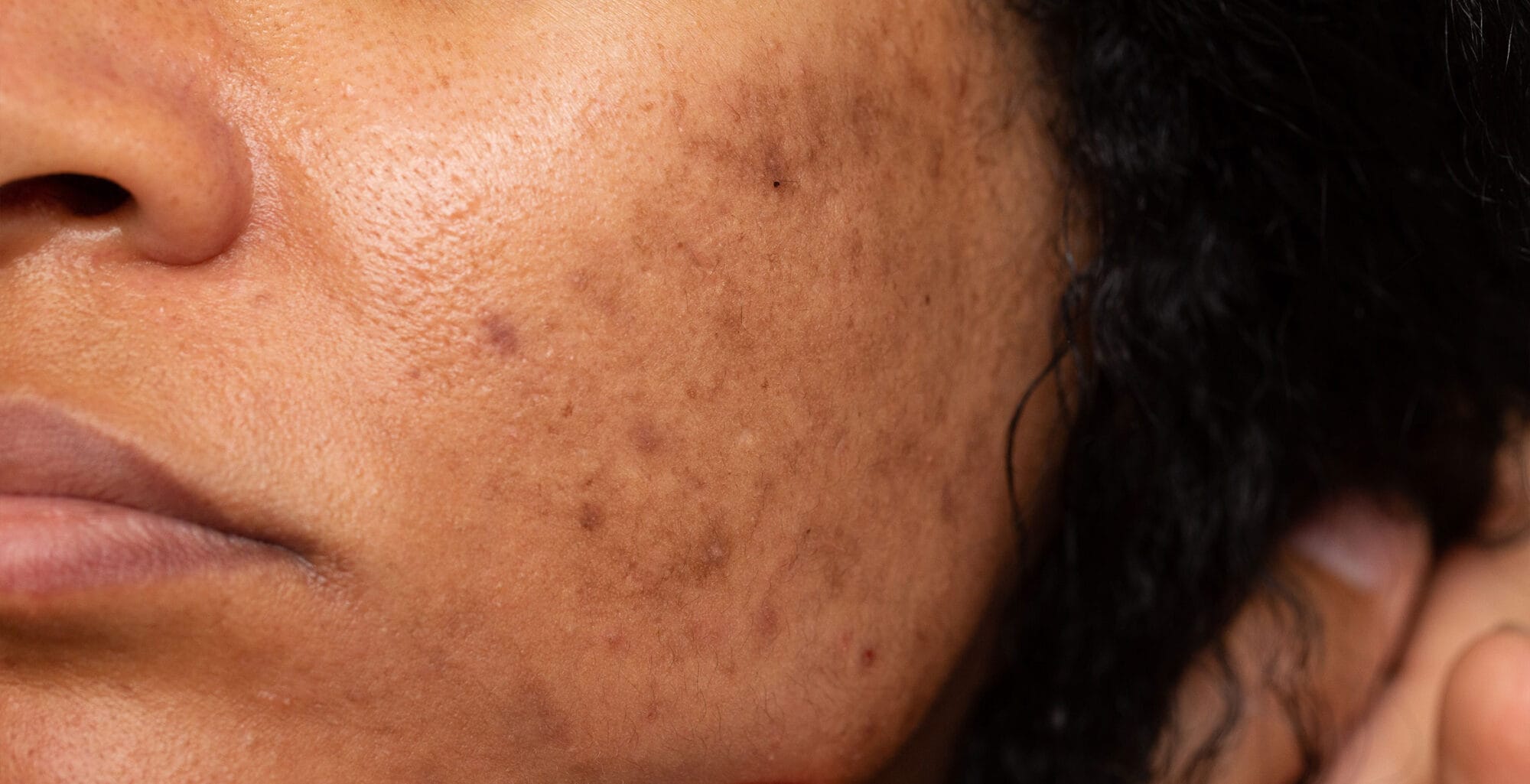Why Skin Discolouration Happens – And How to Fix It
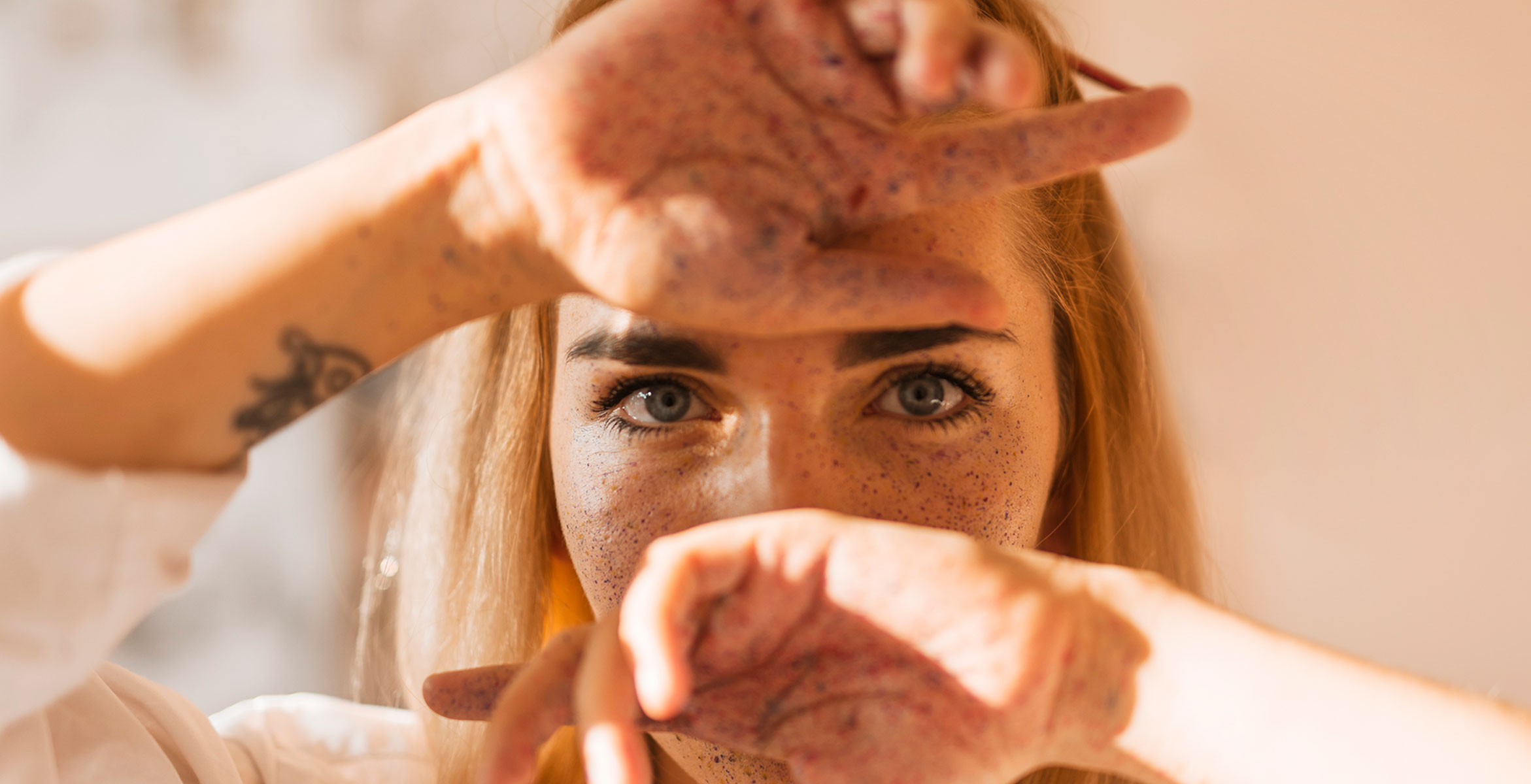
Skin discolouration is more than just a cosmetic concern – it can be a source of frustration, affecting how we feel about our skin. Whether it’s the stubborn melasma that darkens after sun exposure or post-breakout marks that refuse to fade, pigmentation concerns are common but not impossible to manage. The key isn’t harsh treatments but understanding what your skin truly needs. By recognising the causes and selecting the right approach, you can restore a more even, radiant complexion.
Common Types of Skin Discolouration and Pigmentation Issues
Hyperpigmentation
Hyperpigmentation occurs when excess melanin is produced, leading to dark patches or spots on the skin. It can be triggered by sun exposure, hormonal changes, and even skin trauma. Some of the most prevalent forms include:
- Melasma: This condition manifests as dark brown or grey patches, commonly appearing on the forehead, cheeks, and around the mouth. Hormonal changes—such as pregnancy, menopause, or birth control—are primary culprits. Frequent chemical exfoliation or harsh treatments can exacerbate melasma, making a calming skincare approach essential.
- Post-Inflammatory Hyperpigmentation (PIH): These dark red or purple spots are remnants of skin trauma, such as breakouts, bug bites, or minor cuts. Preventing blemishes in the first place and avoiding the urge to pick at the skin can help reduce the risk of lasting marks.
- Age/Sunspots (Lentigines): These brown spots result from prolonged sun exposure and typically emerge in one’s 40s. While they can appear on any skin tone, deeper complexions may experience more melanin-related discolouration. They frequently develop on the face, neck, and chest.
- Freckles: Unlike sunspots, freckles develop early in life, often becoming more prominent after sun exposure. They are particularly common in those with fair skin and red hair and are caused by overactive melanin production in response to UV rays.
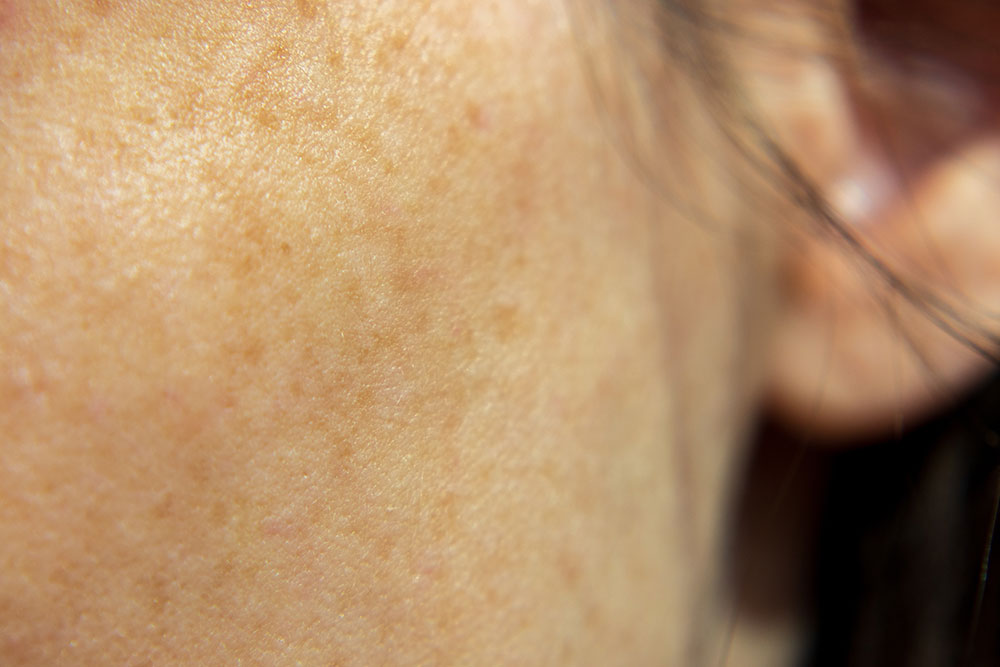
Hypopigmentation
Hypopigmentation occurs when the skin produces less melanin, leading to lighter patches. Some common forms include:
- Vitiligo: This condition results in irregular white patches on the skin due to the destruction of melanocytes (the cells responsible for melanin production). It can appear anywhere on the body, and in the vast majority of cases, it requires medical attention.
- Albinism: A rare genetic condition where melanin production is severely reduced, leading to very light or pale skin, hair, and eyes. (Again, professional guidance is often required for this condition.)
- Post-Inflammatory Hypopigmentation: This occurs after the skin heals from burns, eczema, or injuries, leading to lighter patches where pigmentation has been lost. It is more common in deeper skin tones.
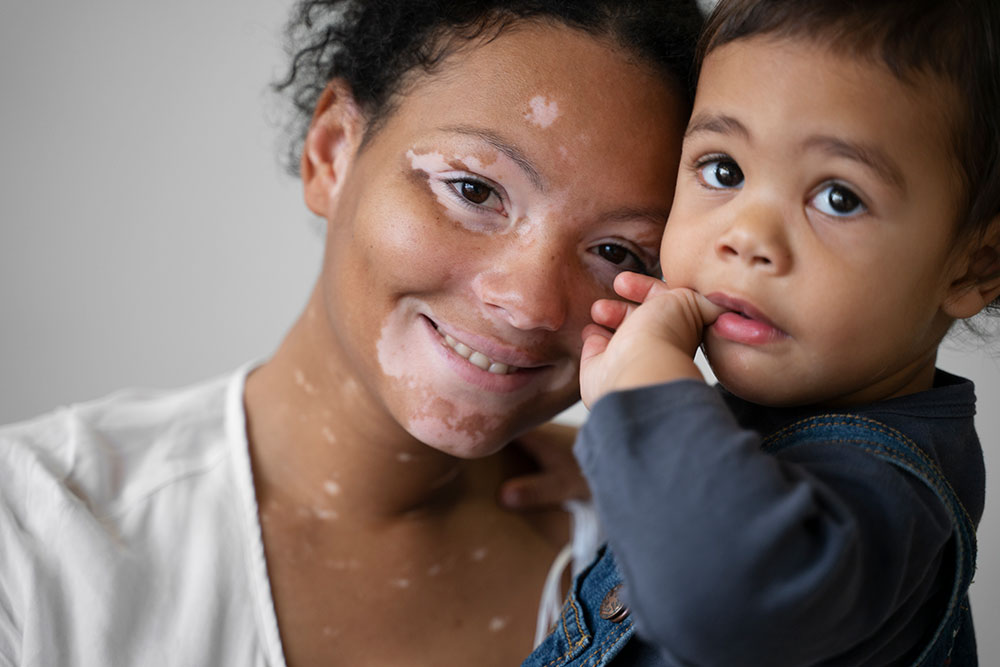
Other Pigmentation Conditions
- Chloasma (Mask of Pregnancy): This condition is similar to melasma but specifically occurs during pregnancy due to hormonal fluctuations.
- Moles and Birthmarks: While some are present at birth, others develop over time. Most are harmless but should be monitored for changes, as some may indicate underlying health concerns.
Sunburn-Induced Pigmentation
Sun exposure can cause both temporary and long-term changes in skin tone. The skin may tan or peel, resulting in hyperpigmentation (darker spots) or hypopigmentation (lighter patches) as it heals.
What Causes Skin Discolouration?
The primary trigger of skin discolouration is an overproduction of melanin. This can be influenced by:
- Genetics: Some individuals are more prone to pigmentation irregularities due to hereditary factors.
- Sun Exposure: UV radiation accelerates melanin production, leading to sunspots, freckles, and worsening melasma.
- Hormonal Changes: Pregnancy, menopause, and birth control can all disrupt melanin production, leading to conditions like melasma.
- Skin Trauma: Breakouts, cuts, burns, and inflammation from conditions like eczema can leave behind lingering pigmentation.
- Inflammatory Diets: Sugar, dairy, and processed foods can trigger inflammation, worsening hyperpigmentation.
- Air Pollution: Urban environments expose skin to pollution that triggers oxidative stress, leading to dark spots.
- Blue Light Exposure: Digital screens emit blue light, which can contribute to melanin overproduction, particularly in darker skin tones.
Hyperpigmentation, in particular, is a stubborn condition that can persist despite treatment. Even after significant improvement, melasma and sunspots can return if skin protection and maintenance are not prioritised.

How to Address Skin Discolouration Effectively
Experts agree that a five-step protocol is essential for managing hyperpigmentation and preventing new discoloured patches on the skin:
- Sun Protection: Using a physical sunscreen with zinc oxide or titanium dioxide (non-nano/micronised minerals) helps absorb and disperse UVA/UVB rays, preventing further damage.
- Gentle Exfoliation: Regular exfoliation removes surface melanin, promoting a brighter complexion.
- Tyrosinase Inhibition: Blocking tyrosinase, the enzyme responsible for melanin production, can help prevent future pigmentation issues.
- Antioxidant Support: Neutralising oxidative stress with antioxidants reduces the oxygen required for melanin production.
- Soothing care: A skincare regimen packed with calming and restorative ingredients can help when the origin of the discolouration is inflammatory.
Our Recommendations
At Twelve Beauty, we offer a curated selection of products designed to address specific pigmentation concerns:
- To Target Dark Spots: Ideal Brightening Corrective Serum – A powerful blend of botanical extracts and deep hydration, this serum actively reduces dark spots while preventing new ones from forming by blocking tyrosinase production. Safe for use during pregnancy and breastfeeding, it’s also non-photosensitive, meaning it can be applied during the day without concern.
- To Protect Against Sun Damage: Artemisia Power Protection Moisturiser SPF50+ – An expertly formulated sunscreen that not only shields against UV rays but also repairs environmental stress-induced pigmentation.
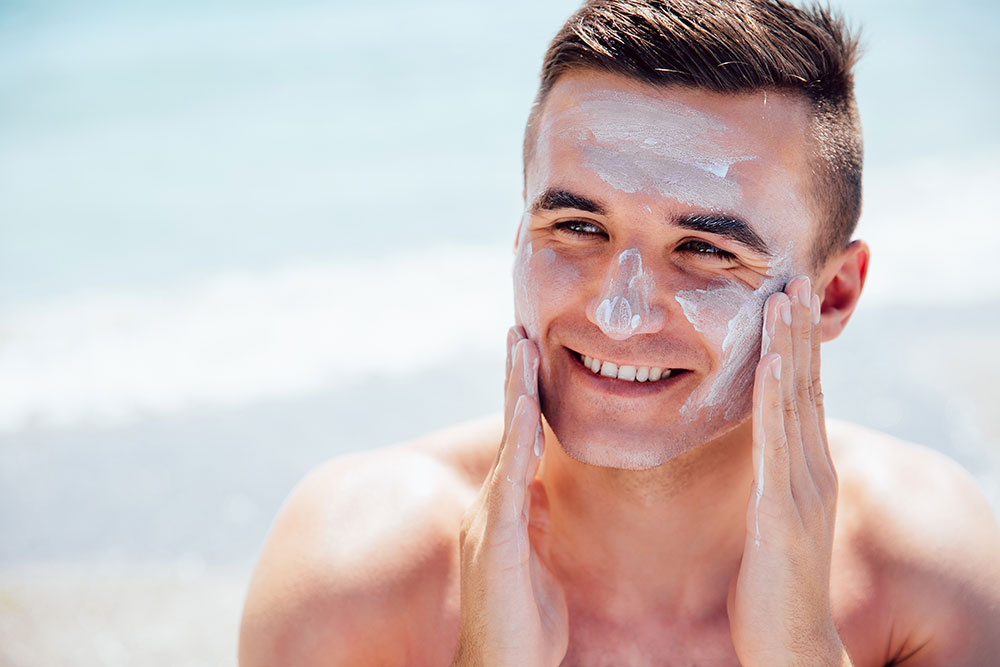
- To Brighten and Revitalise Dull Skin: The London Mask – A gentle yet effective handmade clay mask that exfoliates without stripping moisture, helping to reduce the intensity of dark spots and restore radiance.
- To Soothe and Prevent Inflammation-Induced Pigmentation: Charcoal Peace Calming Cleanser – A calming yet potent cleanser that helps regulate melanin production while keeping the skin barrier strong.
- To Protect Against Blue Light Damage: Ultra Revitalising Elixir – Packed with 5% niacinamide and a blend of antioxidants, this revitalising mist is designed to shield the skin from the harmful effects of blue light. The lightweight, refreshing formula helps to neutralise free radical damage, reduce the appearance of fine lines and wrinkles, and restore the skin’s natural radiance.
Seeking Professional Treatments
While a well-structured skincare routine is essential, sometimes professional treatments can provide an added boost. What’s more, there’s something incredibly indulgent about placing your skin in expert hands – allowing yourself to fully relax as soothing balms, cooling masks, and targeted serums work their magic. A well-executed facial doesn’t just leave your skin looking brighter and more even-toned; it also enhances circulation, reduces stress, and delivers that coveted post-treatment glow.
For expert-led skin discolouration treatments, these Twelve Beauty-approved professionals offer exceptional care:
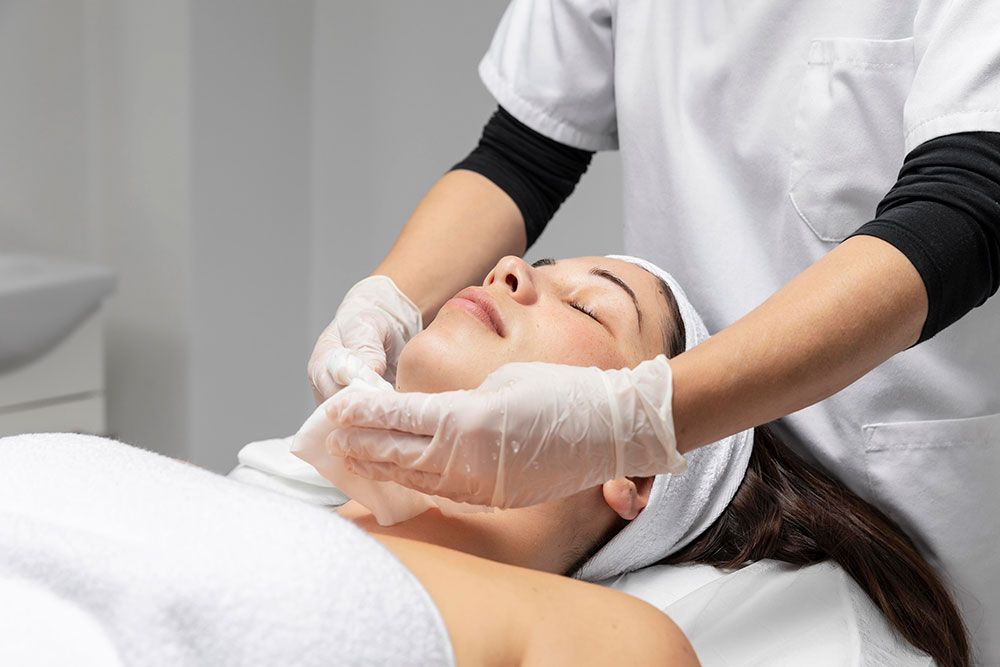
Let there be light…
If you’re dealing with skin discolouration, the right approach can make all the difference. Protecting your skin daily, using brightening ingredients, and incorporating professional treatments when needed can help restore a more even tone. Explore our expertly formulated skincare range to support your skin’s natural balance and reveal a healthier, more radiant complexion.
